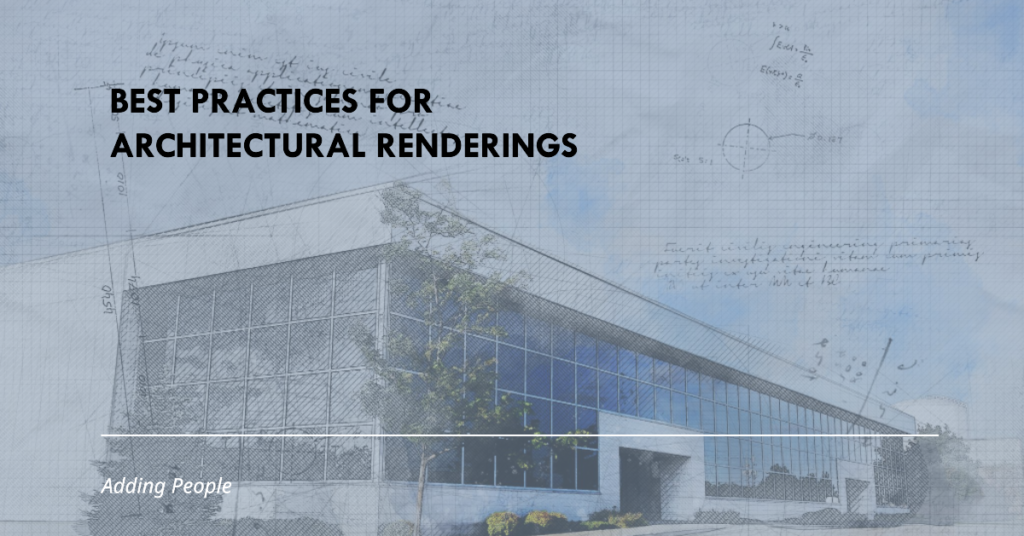
Table of Contents
1. Introduction: Harnessing the Power of Architectural Rendering in Marketing
In today’s competitive market, visual appeal plays a pivotal role in capturing audience attention and driving business success. Architectural rendering has emerged as a powerful tool for marketers, allowing them to showcase designs, products, and concepts in stunning detail before they become a reality. This guide delves into the best practices for leveraging architectural rendering in marketing campaigns, highlighting strategies to engage audiences, communicate value, and boost brand perception effectively.
2. Understanding the Target Audience
Title: Targeting Precision: Knowing Your Audience Before diving into architectural rendering for marketing, it’s crucial to understand your target audience thoroughly. Identify demographics, preferences, pain points, and aspirations that resonate with your potential customers. Tailor your rendering visuals to align with audience preferences, whether it’s highlighting luxury features, emphasizing sustainability, showcasing modern aesthetics, or focusing on functional layouts. A deep understanding of your audience ensures that your renderings speak directly to their needs and aspirations, driving engagement and conversion rates.
3. Showcasing Unique Selling Points
Title: Captivating Features: Showcasing USPs through Rendering Architectural renderings excel at highlighting unique selling points (USPs) of products or spaces. Whether you’re promoting real estate developments, interior design services, or architectural innovations, use renderings to showcase standout features. Highlight architectural details, innovative designs, energy-efficient elements, smart technology integrations, or luxurious amenities through detailed and immersive visuals. Emphasizing USPs creates compelling marketing narratives that differentiate your offerings in a crowded marketplace.
4. Creating Emotional Connections
Title: Emotional Impact: Building Connections through Visualization Effective marketing goes beyond features and specifications—it taps into emotions to create lasting connections with audiences. Architectural renderings offer a powerful medium to evoke emotions such as excitement, comfort, aspiration, or nostalgia. Use renderings to create lifestyle narratives that resonate with target audiences’ desires and aspirations. Showcase scenes of joyful gatherings in residential spaces, productive work environments in commercial settings, or serene retreats in hospitality projects. Emotionally engaging visuals leave a lasting impression, driving brand affinity and loyalty.
5. Enhancing Brand Perception
Title: Brand Elevation: Reinforcing Brand Identity through Renderings Consistent branding is key to building trust and recognition among consumers. Incorporate brand elements such as logos, color schemes, typography, and visual styles seamlessly into architectural renderings. Maintain brand consistency across all marketing materials, from renderings to websites, brochures, and social media posts. By aligning renderings with brand identity, you reinforce brand perception, credibility, and recall in the minds of your target audience.
6. Leveraging Different Rendering Styles
Title: Visual Versatility: Harnessing Various Rendering Techniques Explore different rendering styles to cater to diverse marketing needs and audience preferences. Utilize photorealistic renderings for detailed showcases of architectural designs, interiors, and product features. Experiment with stylized or artistic renderings to evoke specific moods or themes, such as vintage aesthetics, futuristic visions, or minimalist elegance. Incorporate animations or virtual reality experiences for immersive storytelling and interactive marketing campaigns. Adapting rendering styles amplifies visual impact and engagement across various marketing channels.
7. Integrating Contextual Settings
Title: Contextual Realism: Placing Renderings in Real-world Scenarios Contextualizing renderings within realistic settings enhances relatability and authenticity. Place architectural visualizations within familiar environments such as urban landscapes, natural settings, or bustling cityscapes to showcase real-world applications and ambiance. Incorporate human figures, vehicles, landscaping elements, and ambient lighting to create holistic and immersive scenes. Contextual integration helps audiences envision practical uses, scale relationships, and lifestyle experiences associated with marketed products or spaces.
8. Optimizing for Multiple Platforms
Title: Omni-channel Appeal: Tailoring Renderings for Various Platforms Consider the diverse platforms and channels where your marketing content will be showcased. Optimize rendering formats, resolutions, and aspect ratios for websites, social media platforms, mobile devices, print materials, and presentations. Ensure fast loading times, high-quality visuals, and interactive elements where applicable to deliver seamless user experiences across channels. Adapting renderings for different platforms maximizes reach, engagement, and conversion opportunities.
9. Soliciting Feedback and Iteration
Title: Iterative Excellence: Refining Renderings Based on Feedback Seek feedback from target audiences, stakeholders, and marketing experts to gauge the effectiveness of your rendering-based marketing campaigns. Analyze metrics such as engagement rates, click-through rates, and conversion metrics to measure campaign performance. Iterate on renderings based on feedback, optimizing visuals, messaging, and storytelling elements to enhance impact and resonance with audiences over time. Continuous refinement ensures that your marketing efforts stay relevant, compelling, and competitive in dynamic market landscapes.
10. Conclusion: Transforming Marketing Landscapes with Visual Excellence


In conclusion, architectural rendering is a transformative tool that empowers marketers to convey compelling narratives, showcase unique value propositions, and build meaningful connections with target audiences. By understanding audience preferences, highlighting USPs, evoking emotions, reinforcing brand identity, leveraging diverse rendering styles, contextualizing visuals, optimizing for multi-platform experiences, and embracing iterative refinement, marketers can unlock the full potential of architectural rendering in driving engagement, conversions, and brand loyalty. Incorporating these best practices elevates marketing strategies to new heights of visual excellence and market impact.


